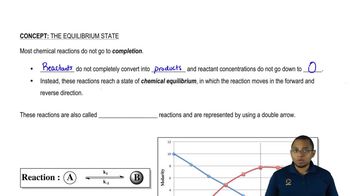Use your answer from Problem 7.53 to calculate the following:
a. [N2O4] at equilibrium when [NO2] = 0.0250 mol/L
 Verified step by step guidance
Verified step by step guidance Verified video answer for a similar problem:
Verified video answer for a similar problem:



 2:50m
2:50mMaster The Equilibrium Constant Concept 1 with a bite sized video explanation from Jules
Start learning